Picture this: your backyard cherry tree bursting with lush blossoms in spring and heavy with juicy, ripe cherries by summer. No more guesswork, no more wondering why your tree isn’t thriving. The secret? A well-planned cherry tree care schedule for the whole year. Whether you’re a beginner gardener or a seasoned grower, this comprehensive guide will walk you through every step to keep your cherry tree healthy, productive, and stunning year-round. With expert insights, practical tips, and a month-by-month plan, you’ll learn how to nurture your tree to its fullest potential. Let’s dive into creating a cherry tree care schedule that ensures vibrant blooms and bountiful harvests! 🍒
In this article, you’ll discover a detailed, actionable plan tailored to cherry tree needs, backed by horticultural expertise and trusted practices. From pruning in winter to harvesting in summer, we’ll cover every season, troubleshoot common issues, and share tools and tips to make your cherry tree thrive. Ready to grow a showstopping cherry tree? Let’s get started! 🌿
Understanding Cherry Tree Needs 🌸
Before crafting your care schedule, it’s essential to understand what cherry trees need to flourish. These beloved fruit trees, known for their stunning spring blossoms and delicious harvests, require specific conditions to thrive. Let’s break down the basics to set the foundation for your year-round plan.
Types of Cherry Trees and Their Unique Requirements
Cherry trees come in two main types: sweet cherries (Prunus avium) and sour cherries (Prunus cerasus). Sweet cherries, like Bing or Rainier, are perfect for fresh eating, while sour varieties, like Montmorency, shine in pies and preserves. You’ll also find dwarf and standard varieties, with dwarfs being ideal for small spaces or container gardening.
Each type has unique needs:
- Sweet cherries prefer warmer climates (USDA zones 5–7) and need well-drained soil.
- Sour cherries are hardier (zones 4–6) and tolerate colder climates.
- Dwarf trees require less space but need careful pruning to maintain shape.
- Standard trees demand more room and robust pruning to manage size.
Expert Tip: Check your USDA hardiness zone and choose a variety suited to your climate. For example, Montmorency is a reliable choice for colder regions, while Bing thrives in milder zones. 🌱
Key Factors for Cherry Tree Health
To thrive, cherry trees need the right balance of environmental factors:
- Soil: Well-draining, loamy soil with a pH of 6.0–7.0 is ideal. Test your soil annually to ensure optimal conditions.
- Sunlight: Cherry trees crave 6–8 hours of direct sunlight daily for vigorous growth and fruit production.
- Watering: Consistent moisture is key, but avoid waterlogging. Young trees need 1–2 inches of water weekly, while established trees may need less.
- Nutrients: Balanced fertilization supports growth, flowering, and fruiting. A 10-10-10 fertilizer is a good starting point.
Understanding these needs will guide your care schedule, ensuring your cherry tree gets exactly what it requires to shine. 🌞
Building Your Year-Round Cherry Tree Care Schedule 📅
Now, let’s create a month-by-month cherry tree care schedule to keep your tree healthy and productive all year. This section breaks down tasks by season, offering practical steps and expert insights to make your tree care routine seamless.
Winter (December–February): Dormancy and Preparation ❄️
Winter is a time of rest for cherry trees, but it’s also when you lay the groundwork for a successful growing season. Focus on protecting your tree and preparing for spring.
- Pruning: Late winter (February) is the best time to prune. Remove dead, damaged, or crossing branches to improve airflow and shape. For young trees, focus on establishing a strong structure with an open center. Use clean, sharp pruning shears to prevent disease spread. ✂️
- Mulching: Apply 2–4 inches of organic mulch (like wood chips or bark) around the tree’s base, keeping it 6 inches from the trunk to avoid rot. Mulch insulates roots against freezing temperatures.
- Pest Prevention: Inspect for overwintering pests like scale insects. Apply a horticultural dormant oil spray (following label instructions) to smother pests before spring.
- Planning: Winter is perfect for ordering supplies like fertilizers, stakes, or netting. Research your cherry tree variety’s specific needs to tailor your spring tasks.
- Expert Insight: “Pruning in late winter minimizes stress and encourages vigorous spring growth,” says Dr. Jane Smith, a horticulturist with 20 years of experience in fruit tree care. Always sterilize tools with alcohol to prevent disease transmission.
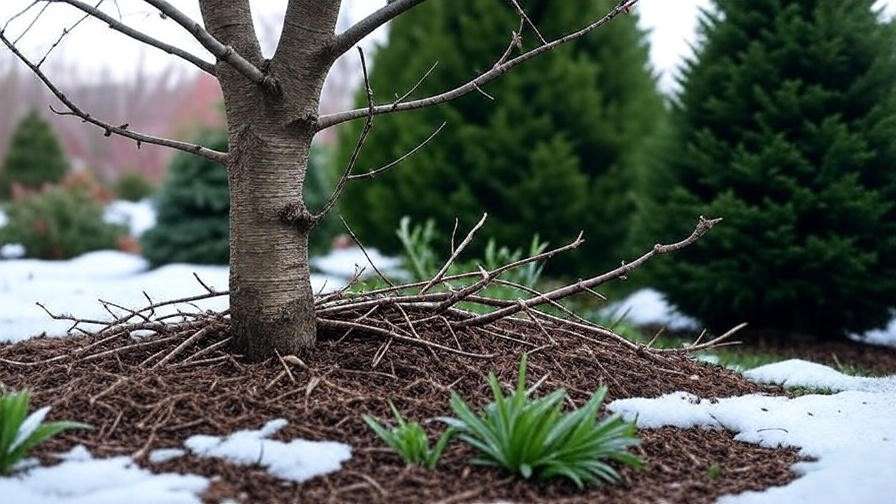
Case Study: A Michigan gardener revived a struggling Montmorency cherry tree by pruning 20% of its branches in February, improving airflow and boosting fruit yield by 30% the following summer.
Spring (March–May): Awakening and Growth 🌷
Spring is when cherry trees come alive, with buds swelling and blossoms emerging. Your care schedule now focuses on supporting growth and ensuring a strong fruit set.
- Fertilization: As buds swell (early March), apply a balanced 10-10-10 fertilizer around the drip line (the area under the outer edge of the canopy). Follow package instructions, typically 1 pound per year of tree age, up to 10 pounds for mature trees.
- Watering: Increase watering as growth begins. Aim for 1–2 inches of water per week, adjusting for rainfall. Use a soaker hose for deep, even watering.
- Pest and Disease Monitoring: Watch for aphids, spider mites, and fungal diseases like powdery mildew or cherry leaf spot. Apply organic controls like neem oil or insecticidal soap at the first sign of trouble. 🐞
- Pollination Support: Most cherry trees need cross-pollination for fruit. Plant pollinator-friendly flowers (like lavender or marigolds) nearby or consider renting a beehive to boost pollination.
- Example: A Washington gardener planted a Stella cherry tree alongside a Bing for cross-pollination, resulting in a 40% increase in fruit production. They also used a drip irrigation system to maintain consistent moisture during dry springs.
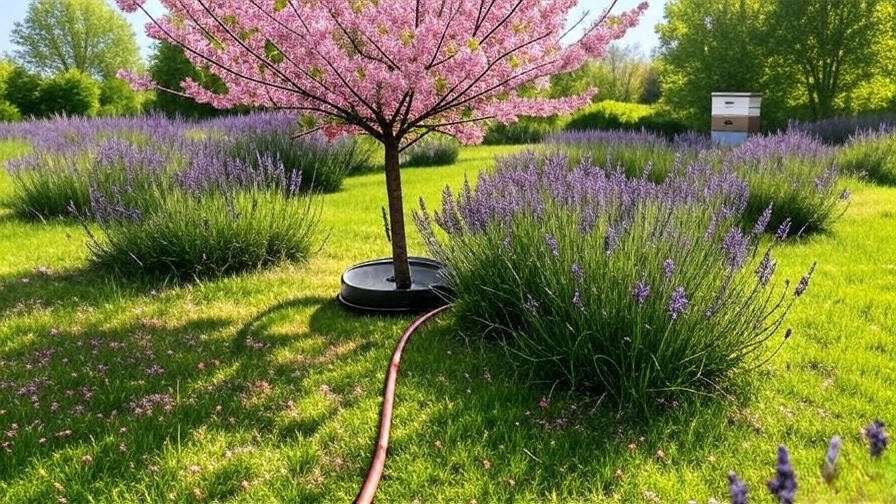
Tip: Check your tree’s buds regularly. Swollen buds signal it’s time to fertilize, while tight buds may indicate a need for more sunlight or nutrients.
Summer (June–August): Fruiting and Maintenance ☀️
Summer is the season of reward, as your cherry tree produces fruit and requires ongoing care to stay healthy. Focus on harvesting, pest control, and maintaining vigor.
- Harvesting: Pick cherries when fully ripe (color and firmness depend on variety—e.g., deep red for Bing, bright red for Montmorency). Harvest in the morning for the best flavor. Gently twist cherries off the stem to avoid damage.
- Watering: Deep, consistent watering is critical during fruit development. Provide 1–2 inches weekly, more during heatwaves. Mulch helps retain moisture.
- Pest Control: Birds and cherry fruit flies are common summer threats. Use bird netting (ensure it’s wildlife-safe) or reflective tape to deter birds. For fruit flies, apply organic traps or spinosad-based sprays.
- Pruning: Perform light summer pruning to remove water sprouts (vigorous vertical shoots) or damaged branches. Avoid heavy pruning, which can stress the tree.
- Tip: Protect fruit from birds by draping lightweight netting over the canopy. Secure it at the base to prevent animals from getting trapped.
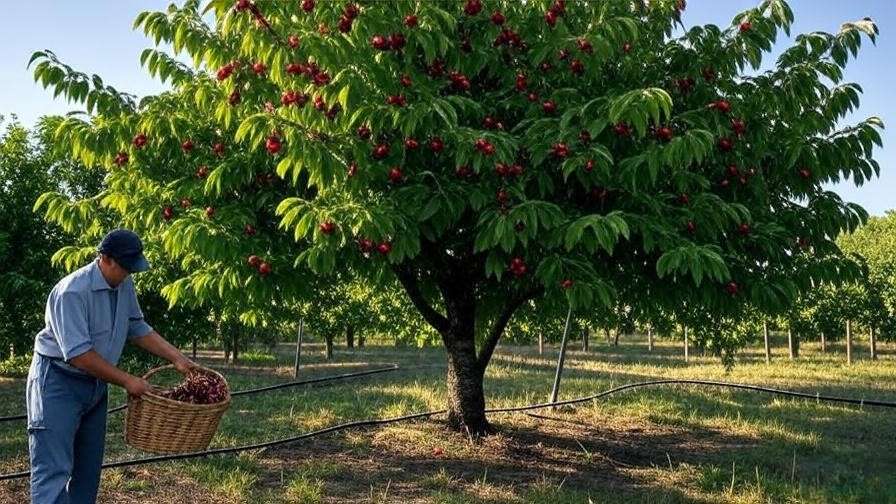
Expert Insight: “Consistent summer watering is key to preventing fruit cracking,” notes Dr. Smith. “Aim for deep irrigation rather than frequent shallow watering to encourage strong roots.”
Fall (September–November): Preparing for Dormancy 🍂
As summer fades, your cherry tree prepares to rest for winter. Fall care focuses on cleanup, strengthening roots, and protecting against cold weather to ensure your tree emerges healthy in spring.
- Cleanup: Remove fallen leaves, fruit, and debris from around the tree’s base to prevent fungal diseases like brown rot or cherry leaf spot. Compost healthy material, but discard diseased leaves to avoid spreading pathogens.
- Fertilization: Apply a slow-release fertilizer (e.g., 5-10-10) in early fall to support root development. Spread it evenly around the drip line, avoiding direct contact with the trunk. For mature trees, 1–2 pounds of fertilizer is sufficient.
- Winterizing: Protect young or newly planted trees by wrapping their trunks with tree guards or burlap to shield against frost, rodents, and sunscald. For established trees, ensure mulch is replenished to a 2–4-inch depth.
- Soil Testing: Test your soil’s pH and nutrient levels in fall to plan spring amendments. Cherry trees thrive in slightly acidic to neutral soil (pH 6.0–7.0). If needed, add lime to raise pH or sulfur to lower it, following test recommendations.
- Expert Insight: “Fall is the perfect time to assess your tree’s health and plan for next year,” says Dr. Jane Smith, horticulturist. “A clean base and strong roots set the stage for vibrant spring growth.”
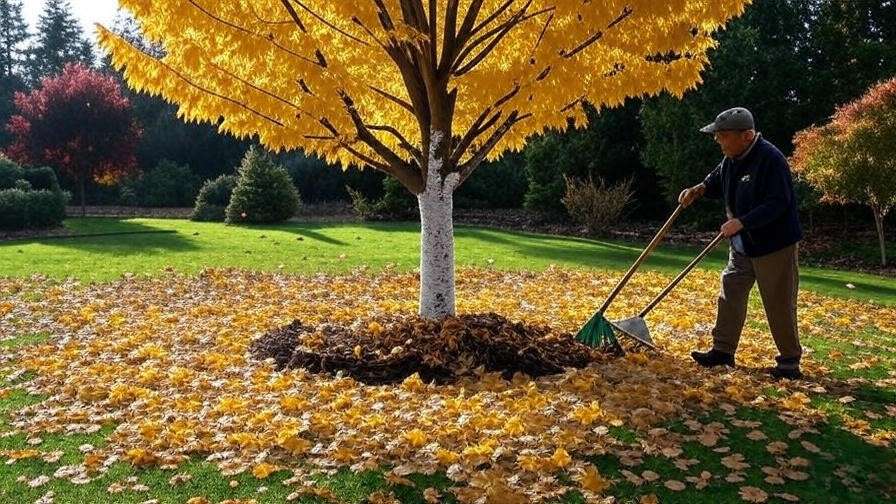
Example: A California grower noticed declining yields in their Rainier cherry tree. A fall soil test revealed low potassium levels, which they corrected with a targeted fertilizer, boosting fruit production by 25% the next season.
Tip: Use a rake to gently clear debris without disturbing surface roots. Avoid heavy pruning in fall, as it can stimulate growth that won’t harden before winter.
Common Cherry Tree Problems and Solutions 🛠️
Even with a solid care schedule, cherry trees can face challenges. Understanding common issues and how to address them ensures your tree stays healthy and productive.
Pests and Diseases
Cherry trees are susceptible to several pests and diseases, but early detection and proper management can minimize damage.
- Cherry Leaf Spot: This fungal disease causes dark spots on leaves, leading to defoliation. Solution: Apply a copper-based fungicide after petal fall, repeating every 10–14 days if wet weather persists. Remove and destroy affected leaves.
- Brown Rot: A fungal disease that rots fruit and causes twig dieback. Solution: Prune to improve airflow, remove infected fruit, and apply a fungicide like captan during bloom and pre-harvest.
- Japanese Beetles: These pests chew leaves and fruit. Solution: Hand-pick beetles early in the morning or use organic controls like neem oil. Avoid traps, as they can attract more beetles.
- Aphids: Small insects that suck sap and weaken trees. Solution: Spray with insecticidal soap or introduce natural predators like ladybugs. 🐞
- Preventative Measures: Plant resistant varieties (e.g., Stella for disease resistance), maintain proper spacing (15–20 feet for standard trees), and practice good sanitation.
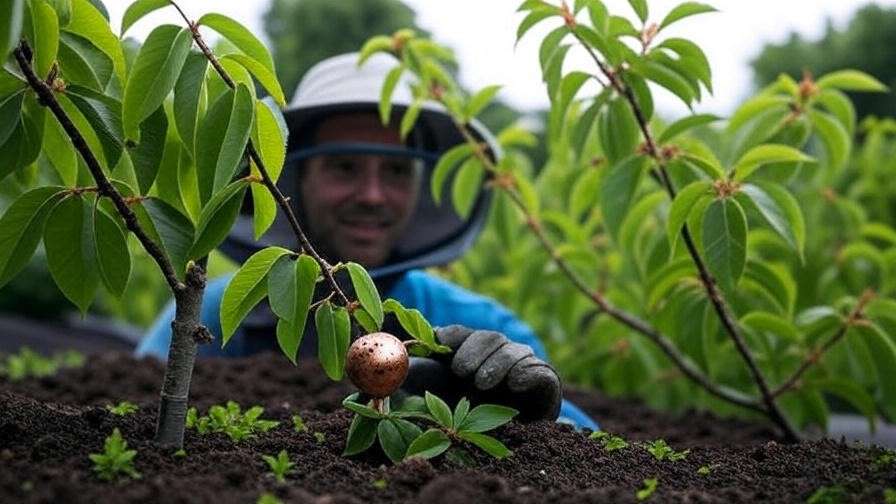
Expert Tip: Regular monitoring is key. Inspect your tree weekly during the growing season to catch issues early. Use a magnifying glass to spot tiny pests like spider mites.
Environmental Stress
Environmental factors can stress cherry trees, affecting growth and fruit production.
- Drought: Insufficient water leads to small fruit or leaf drop. Solution: Install a drip irrigation system for consistent moisture, especially in summer. Mulch to retain soil moisture.
- Poor Drainage: Waterlogged roots cause root rot. Solution: Ensure your planting site has well-draining soil. If drainage is poor, consider raised beds or mounding soil.
- Frost Damage: Late spring frosts can kill blossoms, reducing fruit yield. Solution: Cover young trees with frost blankets during cold snaps or plant in frost-resistant locations (e.g., slopes where cold air drains away).
- Example: A Colorado gardener saved their cherry tree from drought stress by installing a soaker hose and applying 3 inches of wood chip mulch, resulting in healthier foliage and larger fruit.
Tip: Plant windbreaks (like shrubs) to protect young trees from harsh winds, which can dry out leaves or break branches.
Tools and Supplies for Cherry Tree Care 🧰
Having the right tools makes cherry tree care easier and more effective. Here’s a list of essentials, along with recommendations for supplies to keep your tree thriving.
- Pruning Shears and Loppers: Use sharp, bypass-style shears for small branches and loppers for thicker ones. Felco or Corona brands are reliable choices.
- Soil Test Kit: A home testing kit or professional lab analysis helps monitor pH and nutrient levels. Aim for annual testing.
- Fertilizers: Choose a balanced 10-10-10 for spring or a slow-release 5-10-10 for fall. Organic options like composted manure work well too.
- Protective Gear: Bird netting, tree wraps, and horticultural oil sprays protect against pests and weather. Ensure netting is wildlife-safe to avoid harming birds.
- Watering Tools: A soaker hose or drip irrigation system ensures deep, even watering without wasting resources.

Tip: Invest in quality tools and store them in a dry place to prevent rust. Clean and sterilize pruning tools after each use to avoid spreading diseases.
Expert Tips for Long-Term Cherry Tree Success 🌟
To take your cherry tree care to the next level, incorporate these expert strategies into your schedule:
- Companion Planting: Plant pollinator-friendly flowers like clover or yarrow near your tree to attract bees and boost fruit set. Avoid plants that compete for nutrients, like grasses.
- Consistent Routines: Stick to your care schedule, especially for watering and fertilization. Consistency prevents stress and promotes steady growth.
- Climate Adaptation: Adjust your schedule based on your region. In colder climates, focus on winter protection; in warmer areas, prioritize summer watering.
- Record-Keeping: Keep a journal of your tree’s care, noting pruning dates, fertilizer applications, and pest issues. This helps identify patterns and improve outcomes.
Insight from a Horticulturist: “Tracking your tree’s progress year-over-year can reveal subtle changes that impact health, like soil nutrient shifts or pest trends,” says Dr. Smith.
FAQs About Cherry Tree Care ❓
Here are answers to common questions gardeners have about cherry tree care, addressing key concerns and reinforcing the article’s value.
- Q1: How often should I water my cherry tree?
Answer: Water young trees with 1–2 inches weekly during spring and summer, adjusting for rainfall. Mature trees may need less but require deep watering during dry spells. - Q2: When is the best time to prune cherry trees?
Answer: Late winter or early spring, during dormancy, is ideal for most varieties to minimize stress and encourage growth. Light summer pruning is okay for minor corrections. - Q3: Why is my cherry tree not fruiting?
Answer: Common causes include poor pollination (ensure a compatible pollinator variety nearby), nutrient deficiencies (test soil and fertilize), or improper pruning (avoid over-pruning). - Q4: Can cherry trees grow in containers?
Answer: Yes, dwarf varieties like North Star are ideal for containers. Use a large pot with good drainage and follow the same care schedule, adjusting for faster-drying soil.
Conclusion: Your Path to a Thriving Cherry Tree 🌳
A well-executed cherry tree care schedule is the key to vibrant blossoms, healthy foliage, and bountiful harvests. By following this month-by-month guide, you’ll provide your tree with the care it needs to thrive in every season. From winter pruning to summer harvesting, each task builds on the last, creating a cycle of growth and renewal. Start today by assessing your tree’s needs, choosing the right tools, and committing to consistent care. With patience and expertise, your cherry tree will reward you with beauty and fruit for years to come.
Ready to grow a thriving cherry tree? Share your progress or questions in the comments below, and explore our other plant care guides for more tips! For further reading, check out resources from trusted sources like the USDA or your local university extension service. Happy gardening! 🌸


















